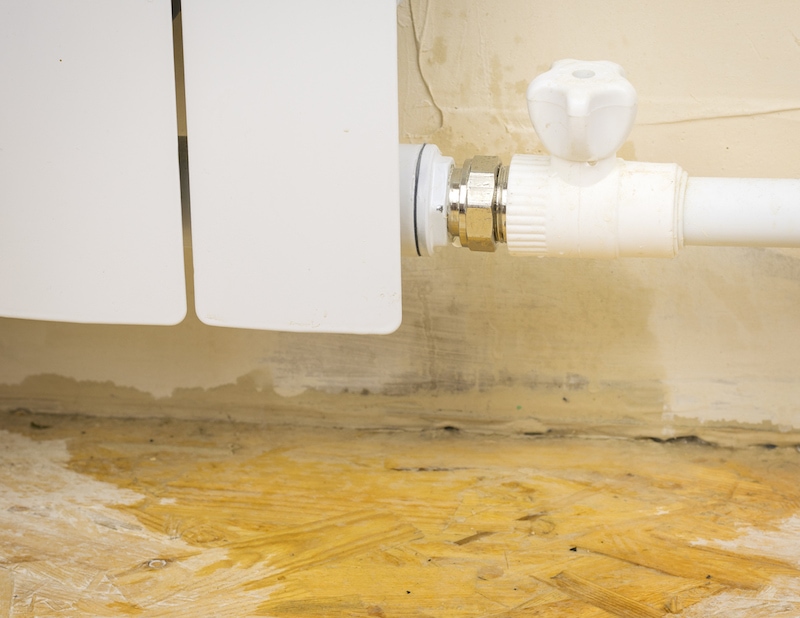Understanding What Leads To Water Seepage Occur So Often in Your Home
Understanding What Leads To Water Seepage Occur So Often in Your Home
Blog Article
Here in the next paragraph you'll find more excellent data regarding How to detect water leaks in your home.

Leakages not just create waste of water however can additionally trigger unneeded damage to your home and also promote unwanted natural growth. Water leaks could go unnoticed considering that many of the pipework in our residence is hidden. By understanding and also looking for everyday scenarios that create leaks, you can secure your residence from future leaks and also unneeded damage. Today, we will look at 6 leak triggers that might be triggering your pipes to leak.
Encroaching roots
The majority of water leaks start outside your house as opposed to inside it. If you discover an unexpected decline in water pressure, claim in your tap, take time to head out as well as analyze your yard. You may observe wet spots or sinkholes in your lawn, and that might indicate that tree roots are attacking water lines triggering water to permeate out. You can have your plumber check for breach, especially if you have trees or shrubs near your building.
Rusty water supply
This may be the cause of staining or warping on your water pipelines. If our plumbing system is old, consider changing the pipes since they are at a greater danger of corrosion than the more recent designs.
Malfunctioning Pipe Joints
The factor at which your pipes connect is often the weakest web link in the waterline. Pipeline joints can deteriorate gradually, resulting in water leakages. The majority of pipe joints are not conveniently noticeable. If you have loud pipelines that make ticking or banging noises, especially when the hot water is turned on, your pipeline joints are probably under a lot of stress. It is advisable to have your plumber check your system annually.
Immediate temperature level changes.
Severe temperature level changes in our pipes can cause them to broaden and also get unexpectedly. This growth as well as tightening might create splits in the pipelines, specifically if the temperature level are below cold.
Poor Water Connectors
At times, a leakage can be caused by loosened hoses as well as pipes that supply your devices. In case of a water links leakage, you may observe water running straight from the supply line or puddles around your home appliances.
Obstructed Drains
Clogged drains may be irritating as well as inconveniencing, yet they can sometimes end up triggering an overflow causing break pipelines. Maintain getting rid of any kind of materials that might drop your drains pipes that can obstruct them to stay clear of such troubles.
All the above are reasons for leaks yet not all water leakages arise from plumbing leaks; some leakages could come from roofing system leakages. All leaks must be fixed instantly to prevent water damages.
Leaks not only cause waste of water however can also cause unneeded damages to your residence and also promote unwanted natural development. By looking and understanding for everyday scenarios that cause leakages, you can safeguard your residence from future leaks as well as unneeded damages. Today, we will look at 6 leakage causes that may be creating your pipelines to drip.
At times, a leak can be created by loosened hoses as well as pipelines that provide your devices. In situation of a water connections leakage, you might see water running directly from the supply line or puddles around your appliances.
How To Check For Water Leak In Your Home
How To Check for Leaks
The average household's leaks can account for nearly 10,000 gallons of water wasted every year and ten percent of homes have leaks that waste 90 gallons or more per day. Common types of leaks found in the home are worn toilet flappers, dripping faucets, and other leaking valves. These types of leaks are often easy to fix, requiring only a few tools and hardware that can pay for themselves in water savings. Fixing easily corrected household water leaks can save homeowners about 10 percent on their water bills.
To check for leaks in your home, you first need to determine whether you're wasting water and then identify the source of the leak. Here are some tips for finding leaks:
Take a look at your water usage during a colder month, such as January or February. If a family of four exceeds 12,000 gallons per month, there are serious leaks.
Check your water meter before and after a two-hour period when no water is being used. If the meter changes at all, you probably have a leak.
Identify toilet leaks by placing a drop of food coloring in the toilet tank. If any color shows up in the bowl after 10 minutes, you have a leak. (Be sure to flush immediately after the experiment to avoid staining the tank.)
Examine faucet gaskets and pipe fittings for any water on the outside of the pipe to check for surface leaks.
Undetected water leaks can happen without the home or business owner even realizing. If you suspect a water leak, but not able to find the source. It is time to contact a professional water leak detection service, The Leak Doctor.
How To Find a Water Leak In Your Home
https://www.leakdoctor.com/blog/How-To-Check-For-Water-Leak-In-Your-Home_AE197.html

We hope you enjoyed our section about Top Causes of Home Water Leaks. Many thanks for spending some time to browse our blog. Liked our blog? Please share it. Let somebody else discover it. Thank you for your time. Visit us again soon.
Visit Homepage Report this page